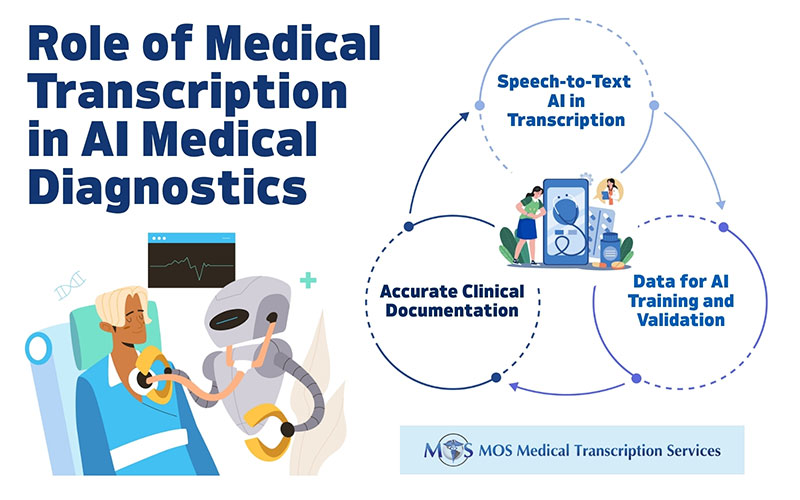
Our medical transcription company reported on how telemedicine is enabling patients to get the care they need at a time when social distancing has significantly reduced physical office visits. According to recent reports, telemedicine is taking diabetes management to a new level.
- Continuous monitoring and care: The American Diabetes Association estimates that about 9.4% of Americans have diabetes and that many Americans have prediabetes, but not aware of it. In these circumstances, continuous monitoring and care are important to keep glucose levels in check and reduce risks of other chronic conditions such as blood pressure, heart disease, and kidney failure. Telemedicine provides the answer. In addition to being a great option for established patients, virtual visits are also proving a viable strategy for newly diagnosed patients who need continuous glucose monitoring.
- Keeps patients away from high-risk environments: A recent Endocrinology Advisor article points out that telemedicine is useful for diabetes management during the coronavirus pandemic and beyond. With Medicare and commercials payers easing certain restrictions on the use of telemedicine and improving coverage, virtual care is available not only for rural patients, but patients in all areas. This is highly beneficial for care of patients with diabetes, especially because the virus poses a double challenge for them (www.touchendocrinology.com). Studies found that diabetes is a risk factor for hospitalization and mortality of the current virus infection. Telemedicine shields them from environments where risks of communicable virus infections are high and allows physicians to monitor them consistently as they stay safe at home.
- Care for patients in remote locations: The 1135 waiver announced on March 3, 2020 has removed restrictions on the location where the patient lives to be eligible to receive the care from home. This facilitates endocrinologist visits and primary care visits as well as remote services for diabetes self-management education and support. Researchers have also highlighted the benefits of telemedicine for gestational diabetes and monitoring of retinopathy.
- Encourages patients’ participation in their own care: With virtual health technologies, patients can be more active participants in their own care. Many already self-inject and monitor sugar levels, blood pressure and weight at home. Telemedicine allows them to share the results and record trends on a website. This makes it easy for physicians to monitor data digitally and manage patients efficiently with a better understanding of their condition.
- Promotes a healthy lifestyle: Telemedicine also improves patient engagement and encourages patients to initiate and maintain a healthy lifestyle. A study from the American Diabetes Association found that digital tools can support patients in their weight management goals, lower blood pressure and drive them to adopt a healthy lifestyle to control diabetes.
- Helps patients with mobility issues: Telemedicine is also a boon for patients with diabetes who have mobility challenges. Such patients can schedule a visit at home or at work and save commutation hassles, time and cost. This is important for those who usually have to travel long distances to get diabetes care.
- Mental health care: When it comes to mental health interventions also, telehealth is a useful option for diabetes patients. People with diabetes are prone to depression, changes in moods, and symptoms such as fatigue and stress. These conditions can be effectively treated via virtual visits. Patients have more options to ensure their privacy is protected with virtual therapy appointments from the comfort of their home.
- Preventative health: Preventative programs can be conducted via telemedicine for people in remote/rural areas (www.hitconsultant.com). The Centers for Disease Control and Prevention is utilizing telehealth platforms to provide educational materials on preventative measures for people at risk in rural areas.
- Helps controls costs due to lost productivity at work: The burden of diabetes on the ability to work has been widely studied. Lost productivity at work can include having to miss work or being unable to work full-time. Low blood sugar levels can make work physically and emotionally draining. Stress and pain from the chromic condition adds to the burden. Unplanned absences can cost the nation thousands of dollars in lost productivity. According to the American Diabetes Association, the cost of diagnosed diabetes in the US was $327 billion in 2017, with reduced productivity adding an additional cost of $90 billion. With its ability to reach people wherever they are, telemedicine can help control these costs.
Experts say that, when it comes to diabetes management, telemedicine is more effective for established patients. However, those with comorbid conditions require care from specialists and would need physical visits. In fact, patients would need to be seen in person at least once a year, says Mark H Scutta MD, medical director of the Penn Rodebaugh Diabetes Center (in Endocrinology Advisor).
As telemedicine continues to grow in use and acceptance, medical transcription outsourcing is a practical strategy for physicians to maintain accurate patient records.


